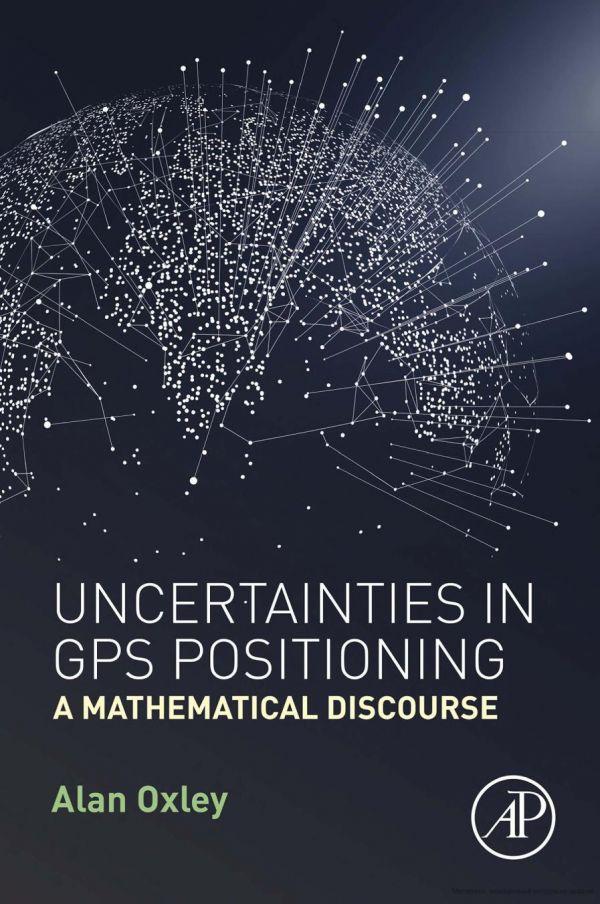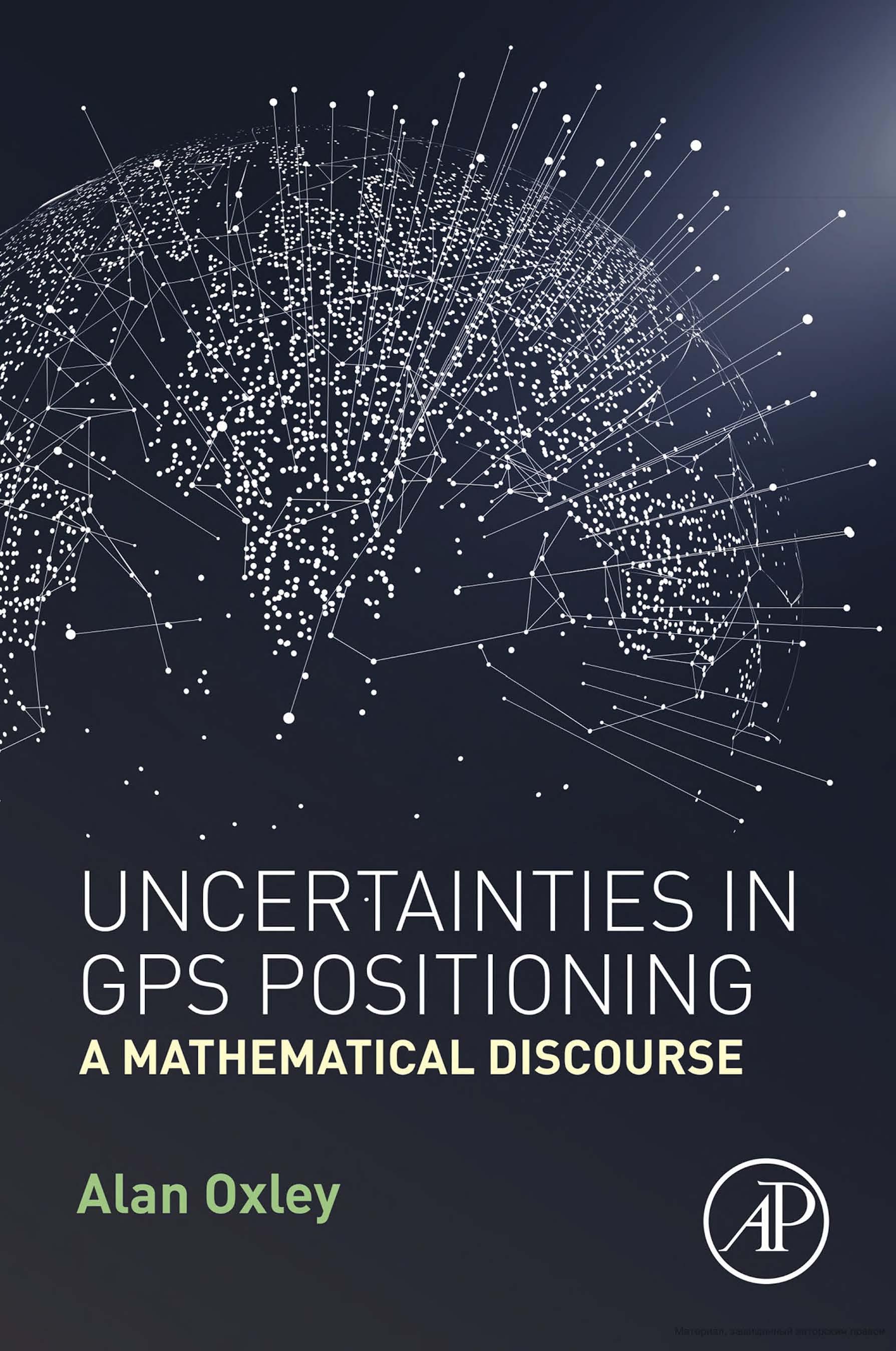https://ebookmass.com/product/uncertainties-in-gpspositioning-a-mathematical-discourse-1st-edition-alan-oxley/
Instant digital products (PDF, ePub, MOBI) ready for you
Download now and discover formats that fit your needs...
Uncertainties in Numerical Weather Prediction Haraldur Olafsso
https://ebookmass.com/product/uncertainties-in-numerical-weatherprediction-haraldur-olafsso/
ebookmass.com
A Contrastive View of Discourse Markers: Discourse Markers of Saying in English and French 1st ed. 2020 Edition Laure Lansari
https://ebookmass.com/product/a-contrastive-view-of-discourse-markersdiscourse-markers-of-saying-in-english-and-french-1st-ed-2020-editionlaure-lansari/
ebookmass.com
Health, Technologies, and Politics in Post-Soviet Settings: Navigating Uncertainties 1st Edition Olga Zvonareva
https://ebookmass.com/product/health-technologies-and-politics-inpost-soviet-settings-navigating-uncertainties-1st-edition-olgazvonareva/
ebookmass.com
Auctioned To The Kodiak Shifter Olivia T. Turner
https://ebookmass.com/product/auctioned-to-the-kodiak-shifter-oliviat-turner/
ebookmass.com
Language Intervention Strategies in Aphasia and Related
Neurogenic Communication Disorders 5th Edition – Ebook PDF Version
https://ebookmass.com/product/language-intervention-strategies-inaphasia-and-related-neurogenic-communication-disorders-5th-editionebook-pdf-version/
ebookmass.com
The concise Oxford history of music Abraham
https://ebookmass.com/product/the-concise-oxford-history-of-musicabraham/
ebookmass.com
Russophobia: Propaganda in International Politics Glenn Diesen
https://ebookmass.com/product/russophobia-propaganda-in-internationalpolitics-glenn-diesen/
ebookmass.com
Contract Law (Q&A Revision Guide) 3rd Edition Marina Hamilton
https://ebookmass.com/product/contract-law-qa-revision-guide-3rdedition-marina-hamilton/
ebookmass.com
Square of Sevens 1st Edition Laura Shepherd-Robinson
https://ebookmass.com/product/square-of-sevens-1st-edition-laurashepherd-robinson/
ebookmass.com
https://ebookmass.com/product/research-design-and-methods-an-appliedguide-for-the-scholar-practitioner-null/
ebookmass.com
PREFACE
Navigationinvolvesmonitoringandcontrollingthemovementofacraftor vehiclefromoneplacetoanother.Positionfixingisabranchofnavigation concernedwithdeterminingthepositionofanaircraft,person,orship onthesurfaceoftheEarth.Manypositionfixingtechnologiesinvolvethe processingofradiosignals.
Therearespace-basednavigationsystemsandterrestrial-basednavigationsystems.TheGlobalPositioningSystem(GPS)isanexampleofthe former.Anexampleofaterrestrialsystemisthepositionfixingofamobile phonebyanalyzingradiosignalsbetween(several)radiotowersofthe networkandthephone.
WeareallfamiliarwiththefundamentalsofGPSreceiver:Itisadevice thatstoresamapandreceivessignalsfromanumberofsatellitesenabling thereceivertodetermineitslocation.Thisisoftendoneinnearrealtime. UncertaintiesinGPSPositioning:AMathematicalDiscourse describes thecalculationsperformedbyaGPSreceiveranddescribestheproblem associatedwithmakingsurethattheestimatedlocationisincloseagreement withtheactuallocation.Inaccuraciesinestimatingalocationcouldhave seriousconsequences.
TheintendedreadershipisindividualsinterestedinGPS,suchasuniversitystudents.Thereaderwillbenefitfrombeingableto:understandhowa GPSreceivercalculatesitsposition;understandwhythecalculatedposition isonlyanapproximationtothetrueposition;gainsomeappreciationofthe factorswhichcontributetothedifficultiesincalculatinganapproximation ofthetrueposition;gainsomeappreciationofthemathematicalstepsthat areemployedinordertoreduceerrorsintheapproximation.
Theimpetusforthebookcamefromthefactthereisinsufficient literaturedescribingthecalculationsperformedbyaGPSreceiverandlittle detailingtheaccuracyofthecalculations.
Thebookcomprisesthefollowingchapters:
Chapter1—PositioningandNavigationSystems
Chapter2—IntroductiontoGPS TherudimentsofwhatGPSisfromauser’sperspective.
Chapter3—BasicGPSPrinciples
CHAPTER1 PositioningandNavigation Systems
CertainnewapplicationsofITchangeourdailylives.Thereareagrowing numberofsuchapplications;correspondingly,morepeopleareopting tousethem.Examplesincludefitnessapplications,GlobalPositioning System(GPS)tracking,healthmonitoring,andnavigationsystems.Inthe 1970s,onlyasciencefictionwritercouldhaveforesawthatpeoplewould beallowinganapplicationtoaccessalittleoftheirpersonaldata,their geolocation,inordertouseaservice.
NAVIGATION
Navigationhaslongbeenofinteresttomathematicians.
HistoryofNavigation
Historicallytheastrolabewasusedtocalculatethepositionsofthesunand stars,amongotherthings.Instructionsforbuildinganastrolabearegivenby St.John’sCollege,UniversityofCambridge (2014).Itisgenerallyaccepted thattheastrolabewasinvitedineitherthefirstorsecondcenturyBC.The odometerisaninstrumentformeasuringdistancetraveled.Thehistorical textoftheSongShi,recordingthepeopleandeventsoftheChinese SongDynasty,gaveadetaileddescriptionoftheodometer.Historicallythe polestarshavebeenusedfornavigationas,throughoutthenight,theyare visibleabovethehorizonandtheirapparentpositionsremainvirtuallyfixed. TheMinoansailorsofCreteareanearlyexampleofthosethathaveused celestialnavigation.Thepositionofthepolestarschangesovertimedue tothewobbleoftheEarthonitsaxis.Anotheraidtosailorswasnautical charts.Theearliestknownworldmapsdatefromthefifthandsixthcentury BC.Ptolemy(AD100–170)wasakeyfigureinearlymapmaking.Sailing directionshaveexistedsincebeforethetimeofPtolemy.
UncertaintiesinGPSPositioning ©2017ElsevierLtd. http://dx.doi.org/10.1016/B978-0-12-809594-2.00001-0 Allrightsreserved. 1
In1884theGreenwichmeridianwasadoptedastheprimemeridianof theworld(i.e.,0degreeslongitude).Thisisoffundamentalimportanceto positioning.
TypeofNavigation
Thereisatypeofnavigationwherereadingsaretakenandretakenatregular intervals.Satellite-basednavigationmakesuseofthisapproach.Thereisa typeofnavigationwhereseveralreceiversareusedtodetecttheposition ofanobjectofinterest(possiblybytheuseofradiowaves).Thetime difference(orphasedifference)betweenreceiversisusedtodeterminethe locationoftheobject.AnearlyexponentofthiswasLORAN,whichwasa hyperbolicalterrestrialradiopositioningsystem.Aterrestrialnavigationor positioningsystemreferstoonethatisontheEarth.Inthecaseofsatellitebasednavigation,however,anindividualreceiverisprocessingdifferences inthereceptionfrommultiplesatellites.
WIRELESSPOSITIONINGSYSTEMS
Thetermslocalization,positioning,andpositionlocationallmean thesame.
Awirelesspositioningsystemiscomprisedofanumberofnodeswhose locationsareknown(knownnodes)andoneormorenodeswhosepositions aretobedetermined(unknownnodes).Anodeisacommunication endpoint.ThereareGPSandlocalpositioningsystems.Asitsname suggests,alocalpositioningsystemdoesnotprovideglobalcoverage.The knownnodesmaybeatfixedlocations,inwhichcasetheyareknownas anchornodes.AnexampleisbeaconslocatedonEarth.Theknownnodes mightnotbeatfixedlocations,asisthecasewithsatellites.Anunknown nodemaybestationaryoritmightbemobile.Abasestationservesasa hubofawirelessnetwork. Fig.1 showsasystemcomprisedofthreeknown nodesandoneunknownnode.
TypesofSystems
Therearedifferenttypesofwirelessnetwork.Wefocusonthosepositioning andnavigationsystemsthathaveresultedfromextensiveresearchandarein widespreadusebyindividuals.
Themainwirelesstechnologieswhichfocusonpositioningare:
1. Radio-frequencyidentification(RFID):Usedtoidentifyortracktags attachedtoobjects.TherangeofanRFIDreaderdiffersfromsystem
Table1 Somepositioningsystems
TechnologyMeasurementtechniqueNotes
GNSS(e.g., Galileo,GPS) TDOA
A-GNSSTDOA
CellularCellID/EOTD/OTDOA/ U-TDOA
Inertial Navigation System(INS)
NFER
Angularvelocity;linear acceleration
Near-fieldpropertiesof radiowaves
RFID TDOA
WLANAOA/RSSI/TOA; radiofingerprinting
Accuracy:Dependswhichof thetwoservicesareused. ForpublicuseofGPS, high-qualityreceivers providehorizontalaccuracy ofbetterthan3.5mmost ofthetime
Pros:Alsoprovidesthe time.Usedinallweathers. Usedanywhereonornear Earth Cons:Needsunobstructed lineofsightoffouror moresatellites
Accuracy:SameasaGNSS Pros:AsforprosofGNSS. Canbeusedwherethere areweaksignals Cons:AsforprosofGNSS
Accuracy:WithU-TDOAit is50m
Accuracy:Dependsonthe typeofsystem. Two-dimensionalaccuracy variesfrom9to2200m
Accuracy:30cm
Accuracy:10cm
Pros:Noneedforlineof sight
Pros:UsedwhereGNSSis inadequatebecauseof multipath,orindoor location,etc.
WSN AOA/RSSI/TDOA/TOA
thedelayofthesignaldoesnotrepresentthetruetimeofarrival(TOA),as itincludesapositivebias,calledtheNLOSerror.
AnINSisquiteadifferentpositioningsystemtotheothertechnologies. Itmakesuseofitemsofequipmentcalledinertialmeasurementunits (IMUs).AnIMUcomprisesaccelerometersandgyroscopes.AnIMUcan
basedontimedifferenceofarrival(TDOA).E-OTDwasfirstimplemented onmobilephonesadheringtotheGSMstandard.Thetechniquesare similar,however,withtheE-OTDandOTDOAmeasurementsaremade bythehandsetwhereaswithU-TDOAthemeasurementsaremadebythe network.WithE-OTD,ahandsetobservesthetimedifferenceofsignals sentfromtwobasestations.OTDOAisusedwithUMTS,whichisasystem thatadherestotheGSMstandard.Ahandsetobservesthetimedifference ofsignalssentfromseveralenodeBs(componentsofthenetwork).With U-TDOA,asignalissentfromthehandsetandispickedupbylocation measurementunits(LMUs).Ahandsetlocationisbasedonthetimetaken forthesignaltoreacheachLMU.
PositioninginWirelessSensorNetworks
Anexampleofameasurementisthedistancebetweenananchornodeand asensornode.Thisprocessofdeterminingthedistancefromonelocation toanotheriscalledranging.Wirelesspositioningsystemscanbeclassified accordingtothenetworkconfigurationandthetypeofmeasurementthat iscarriedout.
Lateration
Oneapproachistouseanumberoffixedanchornodesatknownpositions. Theanchorsaresynchronizedtoemitasignalatthesametime.LetusconsideraWSN.Thesensornodeisatanunknownposition.Itpicksupsignals fromtheanchorsandworksoutitspositionusingtheTDOAtechnique. (ThetechniqueissimilartothewayinwhichaGPSreceivercalculatesits position.) Fig.2 illustratestheapproach.Anotherapproachisforthesensor nodetobroadcastthesignal.Thesignalisreceivedbyeachanchor,which calculatesitsTOA.TheTOAsarepassedtothebasestationanditcalculates thesensornode’sposition. Fig.3 illustratestheapproach.Thebasestation canbeconnectedtotheanchorsusingwires.Considerthefirstapproach, wherethesensornodereceivesthreesignals.LetthethreeanchorsbeA, B,andC.LettheunknowntimestakenforthesignalsfromA,B,andC toreachtheUEbe t1 , t2 ,and t3 ,respectively.Weknowthedifferenceis timebetweenthearrivalofthesignalsentfromAandthearrivalofthe signalsentfromB.Callthis τ1,2 .Theequation |t1 t2 |= τ1,2 describes ahyperbola.Similarly,theequation |t1 t3 |= τ1,3 describesahyperbola. Theintersectionofthesehyperbolaemarkstwopositions,oneofwhichis thelocationofthesensornode,asshownin Fig.4.Ifthecoordinatesof
Anchor Anchor
Sensor node— calculates its own position Sensor node
Anchor
Fig.2 TDOAapproach1.
Anchor Anchor
Anchor Sensor node
Fig.3 TDOAapproach2.
Fig.4 LaterationbyTDOA.
Base station— synchronizes the nodes
Base station— synchronizes the nodes; calculates the UE’s position
theanchorsandsensornodesaregivenin3Dthenthereneedstobefour anchorsinordertodeterminethelocationofthesensornode.
AOAMeasurements
Inoneapproach,anantennaonthesensornodeestimatestheAOAsof signalssentfromtheanchors.Inanotherapproach,anantennaoneach anchorestimatestheAOAofasignalsentfromthesensornode.
Connectivity
Oneapproachforpositioningiswherethesensornodecalculatesits positionusingsignalstransmittedfromanchors.Anotherapproachiswhere thesensornodetransmitsasignalandthenetworkofanchornodesworks outthesensornode’spositionandsendstheresulttothesensornode. Calculationofthepositionofanodeinalargenetworkismoredifficult thatitisinasmallnetwork,asthecomplexityofthecomputationsincreases withnetworksize.Anode’spositioncanbecalculatedbyacentralunitand doneusingadistributedmethod.Distributedmethodsaremorescalableas thetaskcanbedistributedoverthewholenetwork.Thepositionofanode canbecalculatedusingoneofthemathematicalmethods:multilateration, trilateration,andtriangulation.Thedatausedinthesemethodsisoneof thepropertiesoftheRSSI,TOA,TDOA,andAOA.
TheIEEE802.15.4PhysicalLayer
IEEE802.15.4isastandardforlow-power,lowdataratewirelesscommunicationbetweensmalldevices.802.15.4isaPHYandMAClayer protocol(OSIlayers1and2).Devicesaresegregatedintopersonalarea networks(PAN).EachPANhasaPANIdentifier—16-bitnumber.Each devicehastwoaddresses:alongaddress(64-bitgloballyuniquedevice ID)andashortaddress(16-bitPAN-specificaddress).Deviceaddressesare usedinpositioning.Networkscanbebuiltaseitherpeer-to-peer(P2P)or starnetworks.Thetopologyimpactsuponhowpositioningiscarriedout. SeveralPHYsareavailable.OneoftheseusesUWB.Arecentapplication areaisprecisionlocatingandtracking.UWBisusedforreal-timelocation systems;itslowpowerandprecisionmakeitwellsuitedforenvironments thatareradio-frequency-sensitiveenvironments,suchashospitals.The positioningtechniquetobeusedcould,forexample,befingerprinting. Apossiblemethodistouseonebasedonthemaximumlikelihood(ML) principle.Anothertechnique,onethatestimatestheTOA,isbasedona frequencydomainestimationalgorithm.















